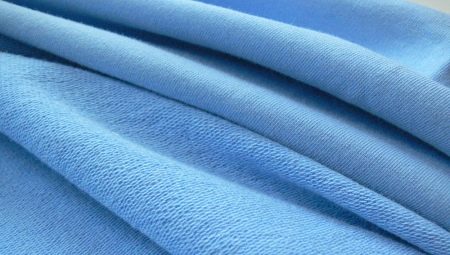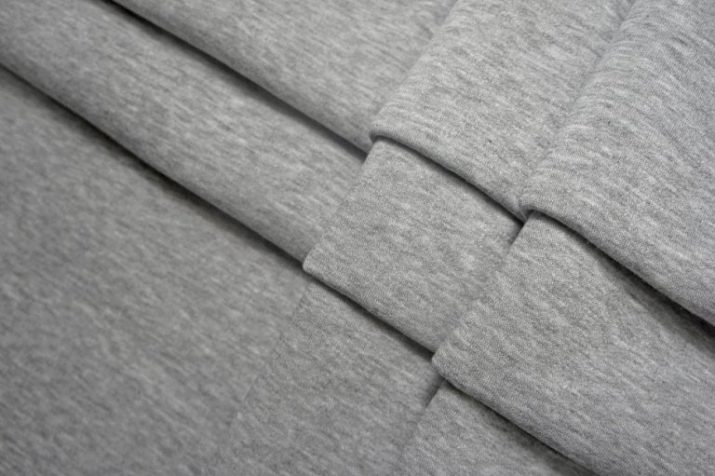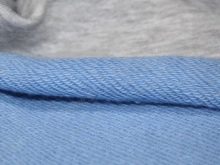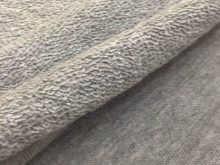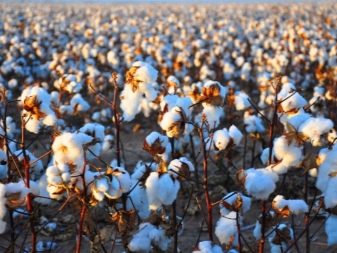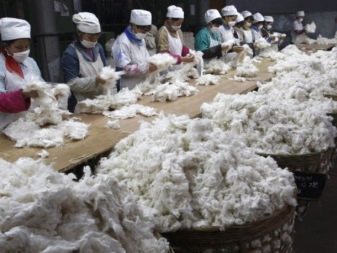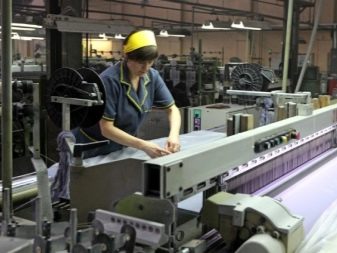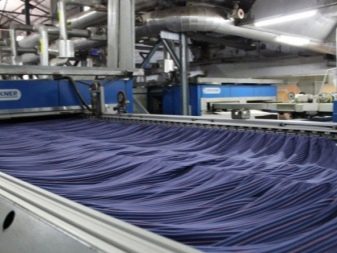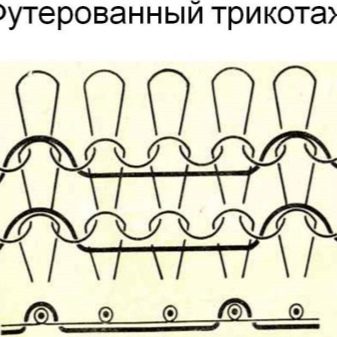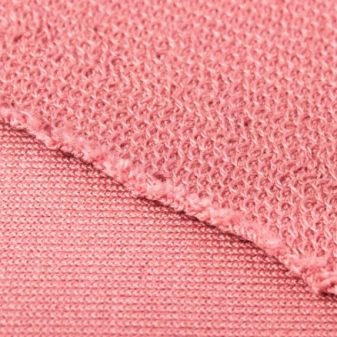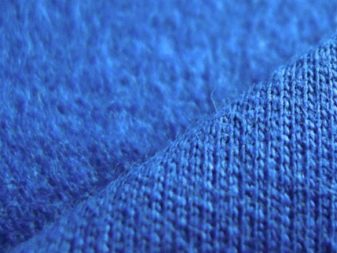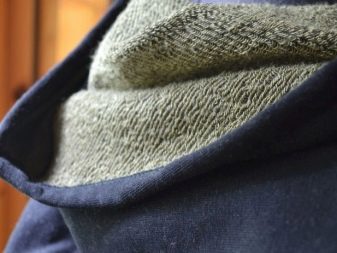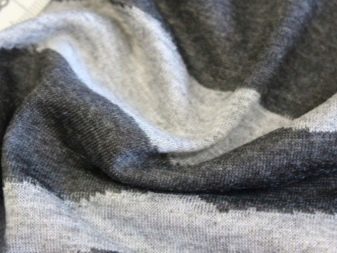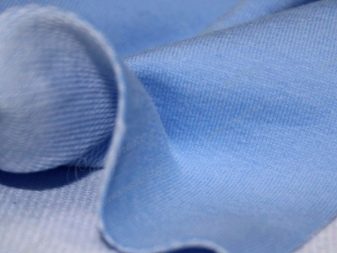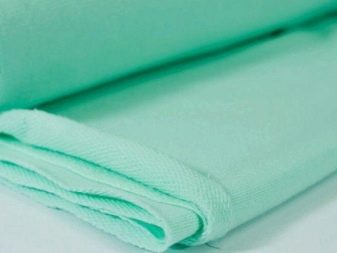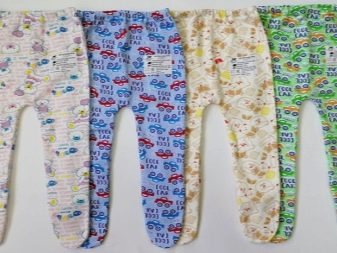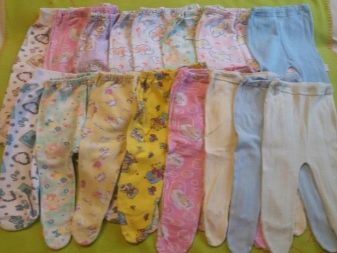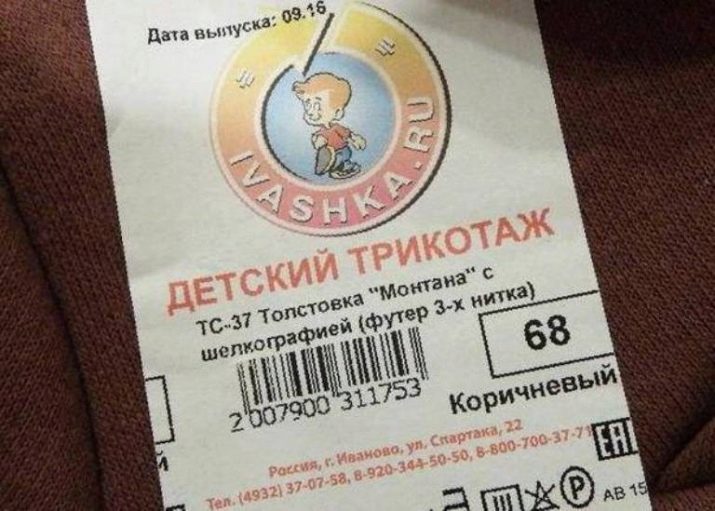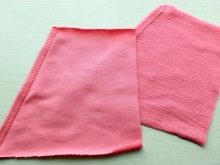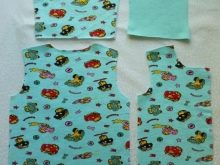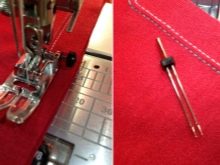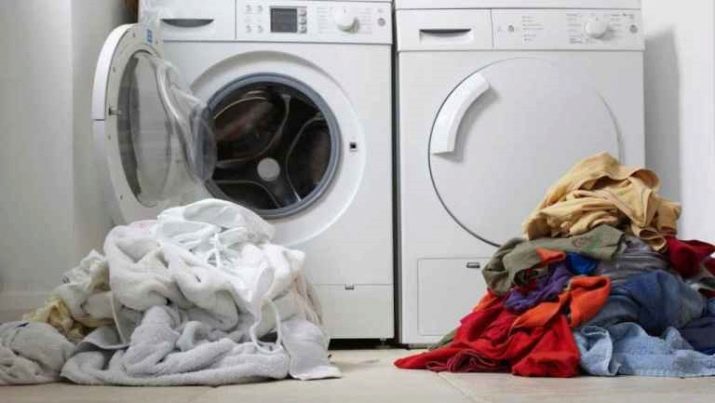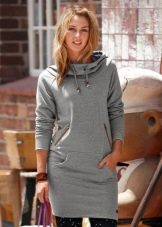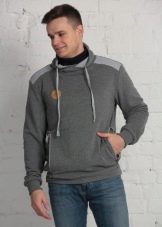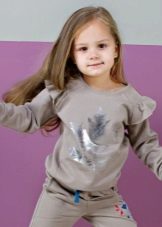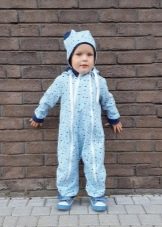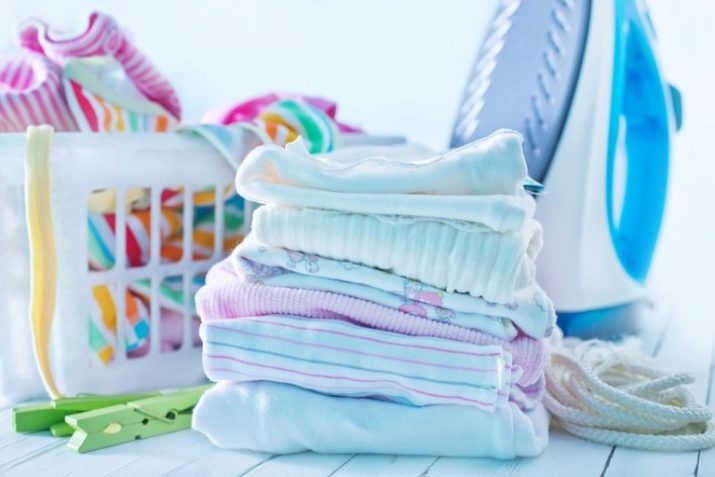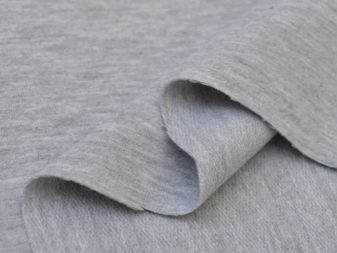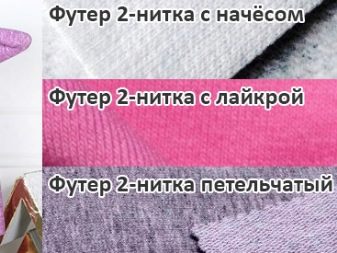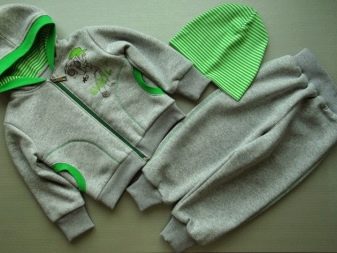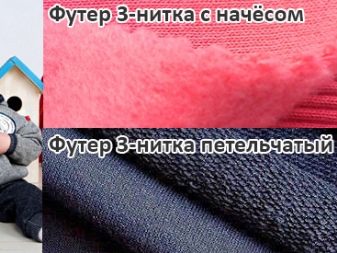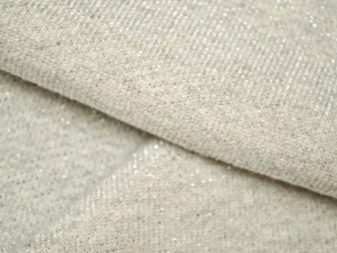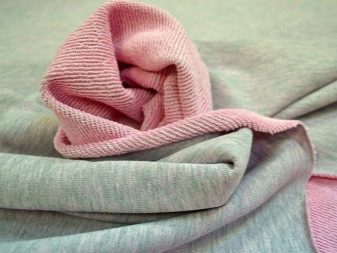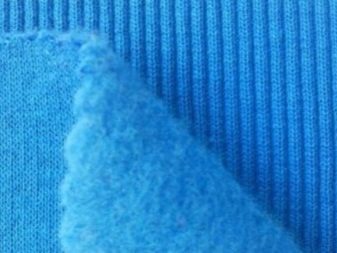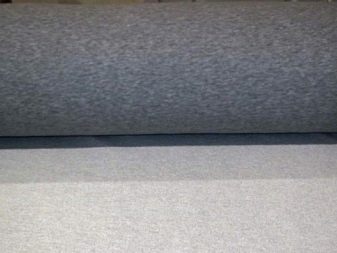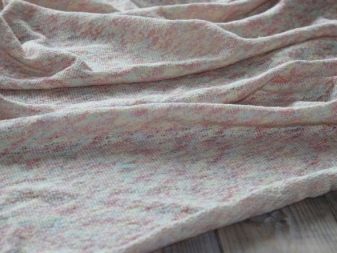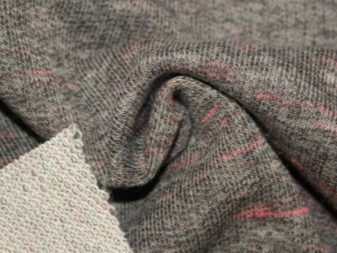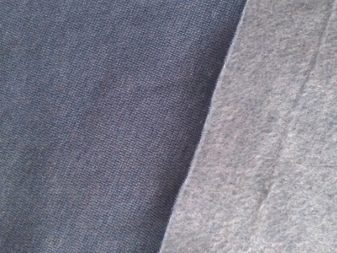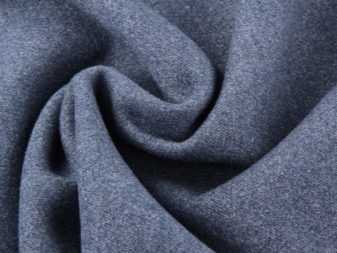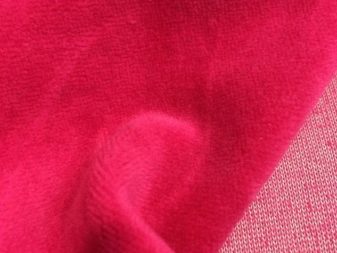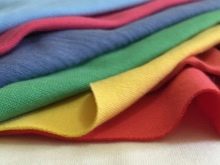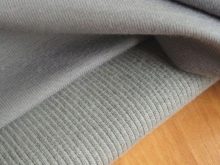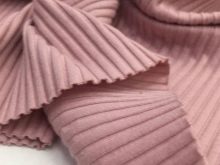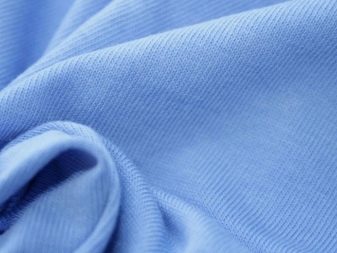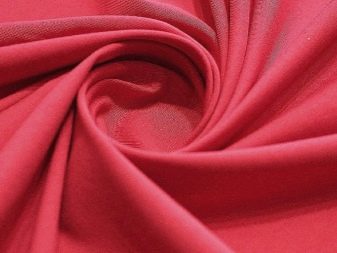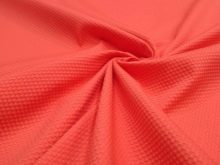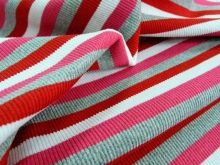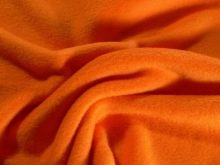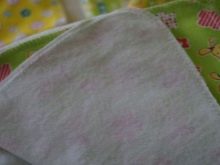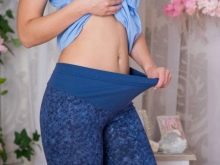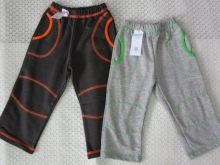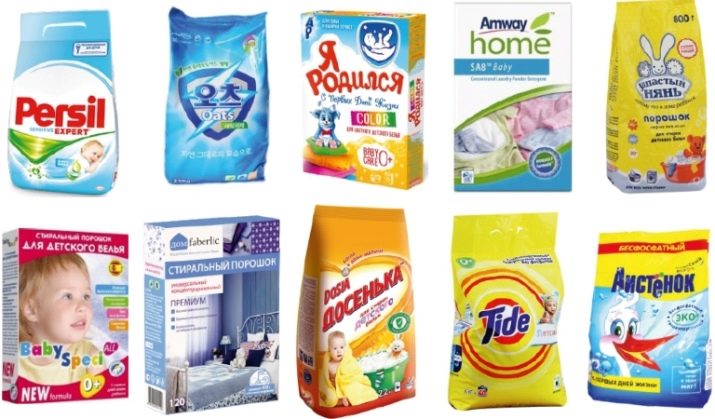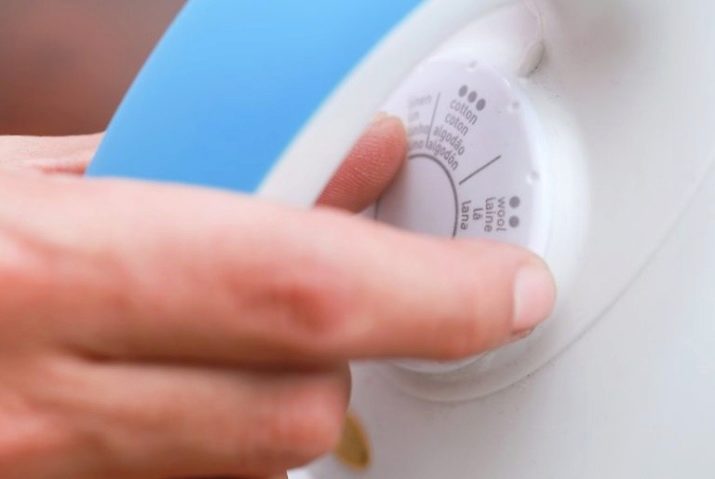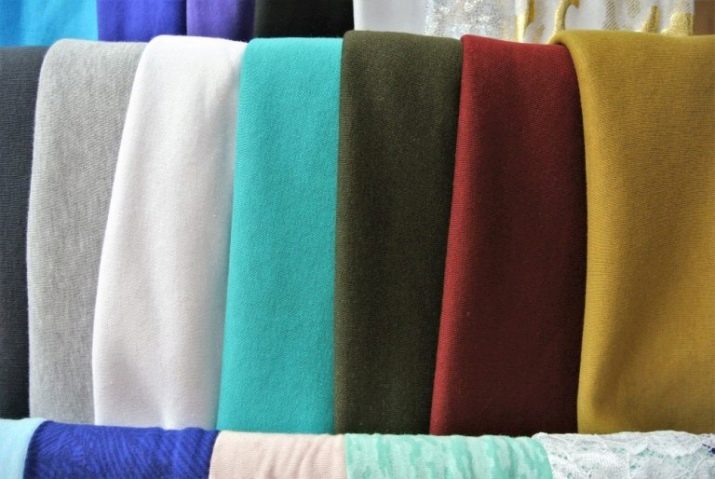Fleece, bike, knitwear, flannel - we roughly understand what we are talking about. And suddenly - "footer." Feed, forage, chuck, grub? Only one translation is relevant to our topic - “lining”. And oddly enough, we are well acquainted with the content of this word, because warm, pleasant to the body sweatshirts, leotards, home clothes "on the bike", children's things - this is the footer.
Understanding the origin of the term, the composition and methods of production, scope and types of footer - the task of this article.
What it is?
A very soft, soft, pleasant to the touch cotton fabric - that is, in essence, a footer. Comfortable fit to the body is provided with the seamy side with a pile of different lengths. While the front side is rather smooth, resembling a kulirny smooth surface. Purl bouffant can be a tight flannelette or looser velor, but the material will still be warm and cozy. It warms not worse than natural wool items, but it does not prick and does not wear out so quickly.
Consider where the footer fabric came from. It is for certain known that the word is German (Futter), but, most likely, it is translated not absolutely precisely: it is not lining fabric as such. Rather, we are asked to pay attention to the lining, wrong side. After all, it is her softness, delicacy and attracts attention.
Country of origin unknown. It can be both India and Egypt, and even the Central Asian republics of the USSR. In a word - where cotton is grown. However, it is not clear why the German name stuck. Presumably the fabric first appeared in the 30s of the XX century. Although, perhaps, there were some analogues much earlier.
In any case, due to the fact that the description of the production technology has appeared, we use with pleasure this practical fabric. And the technology is really interesting for its special method of interlacing the threads: a barely noticeable scar from the front side and lug threads attached to the base from the wrong side. And they fasten looped broach.
It creates the same footer canvas, of course, with the cultivation of cotton. Thermophilous cotton can ripen only where there is a lot of sun. And at the moment of ripening, a cotton boll with soft fibers opens. Cotton fibers are harvested. They undergo long-term processing for cleaning, sorting, depending on the length, pressing, combing and eventually yarn.
The peculiarity of the fabric is due to the fact that two types of thread are used on the machines:
- ordinary, so-called soil, from which weave a strong base for the front side;
- loose, soft, weakly twisted (footer), designed to create a pile of inside out.
The canvas is not woven according to the principle of horizontal arrangement of the threads (the base is the weft), but knit. That is why it is more fair to call it not a cloth, but a cloth. According to the technology, a loosely twisted thread from the wrong side is tied into a cross-knitted or warp-tied soil. Lining yarns obtained as a result of knitting are left in the form of loops or they are created from them with a pile of different lengths. Knitted stitched broaches threads securely fasten to each other, but they stretch well, like any knitted thing.
Composition
The assumption that the footer is 100% cotton is rather erroneous.Cotton fibers are a major component of the material. But for elasticity and increase in strength, other fibers are added to heat.
Wool
The thing becomes warmer, but the natural wool can be barbed, and therefore unpleasant to the body. In addition, both pure footer and wool shrink strongly. Such a mixed canvas is often used precisely as a lining or as a facial fabric when sewing coats, coats and jackets.
Viscose
Gives cotton fiber increased strength. The canvas, pleasant to the touch, has a beautiful appearance with glitter, reasonable price. But also has a high percentage of shrinkage.
Polyester
Synthetic fabric, and, means, more wearproof. Blending cotton and polyester will make things more practical and durable. But it is important to understand that if the percentage of polyester in a product exceeds 20%, then this is no longer a footer. Such things will not pass air. Wearing them will be uncomfortable.
Lycra (elastane)
Perhaps the most successful additive for sports, children's and household things. Lycra content should also not exceed 20%. This amount is sufficient for elasticity and durability of clothing. The material becomes elastic, beautifully fits the body, but does not constrain movement. Even with prolonged wear, things retain their original appearance. They do not form the pellets, they do not require ironing. The optimal is the content of elastane no more than 5%. In this case, the natural properties of cotton are preserved, and the risk of allergic reactions to synthetic fibers is reduced.
In fact, the greater the percentage of impurity in cotton, the coarser the canvas becomes. It is not so nice in the tactile sense. Therefore, from such material usually sew outerwear, which is not in direct contact with the body.
The density of the footer is 170-350 g / m2. It depends on the percentage of added fiber.
Advantages and disadvantages
Before drawing conclusions about the advantages and disadvantages of the footer, Let us turn to customers who have left their reviews about products on various websites and forums.
- Many people write that they bought things from a footer for socks at home, since it is cold in the dwelling in the winter. And they did not regret it - the material retains heat perfectly.
- Young mothers praise clothes for toddlers: even with the constant friction of the sliders on the floor, they wear imperfections. The knees on the pants did not turn into bubbles, as the thing holds its shape perfectly. After numerous washings, the sliders and blouses are still soft and retain their appearance. Even if the child is sweating, then allergic reactions do not appear on the skin, because the footer absorbs all the moisture.
- Professionals and amateur athletes say that in such sports suits it is convenient to run and practice outdoors in cool weather: the body breathes, the footer with lycra perfectly fits the body. The feeling of comfort is very nice. Even with the use of more than a year, the item has not lost its original color.
- Anyone who works outside or in cold rooms is satisfied with the convenience of clothing: it does not hinder movement.
- In the world of synthetics, allergy sufferers having problems with these materials are very difficult to live. Therefore, the footer - a few salvation from the problem. 100% cotton protects against attacks. The main thing is to carefully study the composition of the material before purchase, so as not to buy a mixed item.
- Professional tailors and amateurs warn that the footer clothing sits down very strongly, therefore it is advised to wash and iron the cloth before cutting it so that it immediately shrinks. At the same time, they write that working with a fabric when sewing is easy.
- Most buyers note that in order to avoid shrinkage problems, when buying ready-made things you need to buy them one or two sizes larger.
- Everyone says that things from the footer are inexpensive, and therefore almost everyone can afford them.
- The reason for cheapness is not only in the material, but also in the manufacturer: a large segment of things is produced in the country where we live. And their quality is on top.
- Some buyers have a problem with unscrupulous manufacturers (or sellers) when buying things over the Internet. At the very first wash in a delicate mode at 30 degrees things shed heavily. And since they were washed with other clothes, everything was in the cannon from the footer.
Well, now let's summarize.
- From the reviews it becomes obvious that since the footer is a natural (or almost natural) material, it gives a strong shrinkage when washing. This is a minus.
- The second minus is not very good resistance to staining. The result is a loss of color after washing.
- The third - a violation of the stated qualities due to the excess percentage of mixed fibers.
- Fourth - requires careful treatment during washing (which will be discussed below).
Virtues
What about the virtues of such things - They are inherent in most natural materials.
- When buying, we focus on tactile sensations. And here they are pleasant: a soft fabric that can keep warm. This contributes to the wrong side with a short or long gun.
- Strength due to weaving technique. The buyer can choose the material of different levels of strength.
- The ability to maintain shape, to return to its original state after stretching. The material is resistant to deformation.
- The essence of the lining weave and the structure of the fibers allows air to flow freely to the skin, maintaining good air permeability. Stuff in such clothes is not terrible.
- Good moisture absorption. With active perspiration or infant problems, fluid will not remain on the body, but will be absorbed into clothing. It will only change things quickly.
- About such material they say "no demolition." It is difficult to tear it, no pellets or puffs form on it.
- When 95-100% of the composition of cotton things do not cause allergies (if it is not on cotton fibers). There is no unpleasant smell, and no toxic substances are released.
- Initially, cotton fibers are processed under environmental conditions: they are not soaked in bleach, they are not split in chemicals. This allows you to talk about the environmental material, naturalness and safety.
- Minor features of washing overlap the simplicity of ironing and storage. There are no difficulties in the care.
- Even home craftswomen will not be difficult to sew and process things from the footer. With the help of a knitting needle, a double stitch or a zigzag, you can sew cozy household items or outerwear.
- Cloth or high-quality things can not be called cheap, but still the price is quite affordable for good warm clothes.
Kinds
The manufacturing technology of the looped material determines the release of three types of canvas.
- Single yarn weave from the best cotton. Cloth turns thin. One of the best materials for clothes just born kids, as well as for comfortable underwear.
- In the double-thread footer, 2 broaching threads are woven from the back side. Viscose thread or synthetic fibers are often added to this type. The average density of the fabric is popular when sewing home and children's clothing, warm underwear, sweatshirts, sports suits, trousers. From the inside, the material resembles mahr, and it has the second name frenchterry (terry jersey). Things are warm, but they look too bulky, cumbersome. When adding lycra material becomes elastic.
- Triple thread has a long napand the material itself becomes thick and very warm. In addition to the above-mentioned elastane, polyester, viscose, the more popular Italian or cheaper Turkish knitwear “3-thread lurex footer” is popular among buyers.
If the stitching threads from the inside out form loops, then such a footer is called a “3-thread loop”. If the combed machine with special needles passes, in a special way, processing the seamy threads, then it turns out “3-thread pile”.This is the warmest footer, so it is used in the tailoring of overalls and thermal underwear. If the bouffant is thin, then the fabric looks like a bike, if it is thick, like an artificial fleece.
But the technology itself depends on the quality of the raw materials.
- Best Grade Cotton (PE) has a fiber length of about 35-70 mm. Singing is distinguished by its smoothness, lack of "gun". The high quality of the single-thread cloth, the high price, and the fluffy, steady pile from the wrong side - this is what gives the use of singing in the manufacture of a footer. This material is much less wrinkled, does not cough (does not mohrit), different silkiness. A variety of this variety is compact singing - cotton of the highest quality, which does not shrink, does not form a pellet (is not subject to peeling), and is wear-resistant.
- Ring or card - cotton with a rating of 4 on a five-point scale. The length of the fibers - 27-35 mm, with a small "down". It gives the canvas a little roughness.
- Open, open end, O / E - the lowest quality cotton used to make a footer. The length of the fibers - 20-27 mm (from fibers of a smaller length make cotton wool). Short fibers - cause fluffy linen. To get rid of it, it is treated with special proteins - catalysts (enzymes). The result of the use of short fibers also became the villi on the front side and the fleece, which quickly rolls down from the inside. But low quality is low price.
When buying fabric or ready-made things, you should pay attention to the “quality” line: this is exactly what will be indicated from which raw materials the footer is made (and other cotton fabrics).
Knitted fabric is different and appearance.
- The classic will be performed in a vertical scar (as a kulirka).
- A diagonal hem, obtained as a result of using another method of weaving, will remind denim (jeans).
- As a rule, footer monophonic, but different colors. There is a variety, but gray mélange is very often used for sportswear, and ecru is used for thin knitwear.
- To diversify the colors of products, use digital direct printing "Digital" for drawing.
Comparison with other materials
In order to understand what makes the footer different from other cotton and synthetic fabrics that look similar, let's give them a brief description.
Velours
Fabric with a soft pile of pure wool. But the looped velor knitwear can be synthetic, cotton, silk or wool, or of several types of fibers. Therefore, the composition of the canvas will be of fundamental importance. Pile can be located perpendicular to the base or smoothed in a pattern, embossed and so on.
Interlock
Knitted double-sided fabric, but smooth on both sides. Special weaving creates a structure in the form of an elastic band, which makes the fabric stronger and allows you to quickly restore shape after deformation. Cotton 100% (or with a small amount of other fibers), pleasant to the touch, it is warm and comfortable. The properties are similar to footer. The difference is that it does not shrink after washing and is not so elastic.
Kashkorse and knitted noodles
Created by mating "front - purl" 2x2 (on the principle of the English gum). Cashmere as a gum is used in clothing (cuffs, necklines, belts), knitted noodles are widely popular as a material for dresses, turtlenecks, sweaters, skirts, cardigans. 95% cotton and 5% spandex. The main property is a great stretch that allows you to fit the body and often protect from the cold.
Kulirka
Smooth cotton knit with the addition of elastane (lycra) for density and shaping. The kulirny smooth surface is got at the expense of hosiery knitting: thin dense pigtails on the face and "a bricklaying" - on seamy. The width of the braids can be stretched, in length - almost none. The cloth easy, breathing, is almost not rumpled. T-shirts, T-shirts, nightgowns, light pajamas, children's clothes are what I sew from this popular fabric.It can be one-colored, one-colored, with a pattern or print, knitted of multi-colored threads (melange). Does not shrink, it is almost not rumpled.
Kulirka with lycra (suprem)
Silky high-quality knitwear. Fabric breathable, well lasting. That is why from it sew underwear and light summer clothes.
Pique
Cotton or synthetic fabric complex weaving, similar to the honeycomb. A striking example is waffle towels. Smooth-colored shirts for polo, golf, tennis sew from the peak. And also let out a dive with a pile. In addition to honeycombs, you can find diamonds, squares, a hem, but almost no stripes. The material is durable, almost never wrinkled, well worn.
Ribana (eraser, gum 1x1)
Highly elastic elastic knit, similar to cashmere, but thinner. Both sides can be called facial. By adding lycra, it stretches well across the canvas. Cuffs, necklines, turtlenecks, pajamas and similar clothing, hats and underwear — this segment took ribana with cashmere. The fabric can not be twisted and dried in the sun.
Fleece
Unstructured felted polyester made by a special technology. Very nice, soft synthetic knitwear. Breathable, hypoallergenic, dries quickly, resilient, does not shrink, holds its shape well, is durable, wear-resistant. For adults, it is used for sewing almost any type of clothing, hats and scarves, as well as as a lining. For children it is not recommended to use as wearable clothing.
Scope of application
Nowhere was there any mention of the fact that the footer is used, for example, for sewing covers or in medicine. This is understandable. One of the main properties - the footer gives heat to its owner. That is why it is valued in the light industry.
- For newborns, diapers are made from thin linen. For babies and older children - sliders, scratches, mittens, blouses, overalls, vests, trousers, pajamas, dresses and many other warm and comfortable things.
- Homewear from singing, ring and carda suits both men, women, and children.
- Sportswear with a pile for a cold street or thin for a hall is valued for durability and convenience, as well as for the ability to breathe and absorb moisture.
- Dresses and suits for pregnant women are warm, supple and safe.
- Casual wear is simple care and comfort.
Care instructions
If you want a gentle footer to keep its properties for a long time, try to properly care for your favorite things: follow the recommendations on the product label. If not, follow the general rules.
- Knitted things are washed by hand or in a washing machine in a gentle mode.
- For a thin footer, a water temperature of 30 degrees is recommended, for an average - 40, for a thick one - 50.
- All buttons and buttons are buttoned before washing. The purpose of the manipulation is not to damage the looped fabric and delicate pile with the accessories. If it is not possible to hide the pile (for example, when washing diapers), then such things should be washed separately or put in a special mesh or pillowcase.
- For washing children's clothes you need to use soft powders or gel.
- Colored clothes are washed with special powder and liquid detergents.
- This fabric can not be boiled.
- You can squeeze things in the machine.
- For drying use natural conditions without access to sunlight.
- If the thing is stroked from the front side, then they do it in the “cotton” mode, if from the wrong side - in the “silk” mode.
Do not buy a cheap footer. If you want to learn from the mistakes of others, and not on their own, get acquainted with the conclusions of experts.
- Cheap footer, consisting of 90-100% cotton, is nonsense. Immediately pay attention to the density. For sweatshirts and similar things, the normal density is 310-350 g / m2.
- Cheap knitwear may be due to the large number of synthetics. Anything below 90% should already be alerted. Although most often on the labels is: 80% cotton and 20% something else.
- Only the roughly finished open end can be cheap.If this workwear is comfortable for you, then you decide whether to buy such a thing. But its quality and service life leaves much to be desired.
- If a cheap dye is used, then the thing will be cheaper. The result is instant molt after washing and loss of appearance.
- Using glued cotton instead of natural wool is the fifth reason for cheaper goods. Soon, such a “bouffant” will begin to stick to the body and things, and after washing it will generally disappear.
Footer - really, very good knitwear. You should not be disappointed in it, buying a low-quality thing.
Details on this type of fabric, see the video below.
